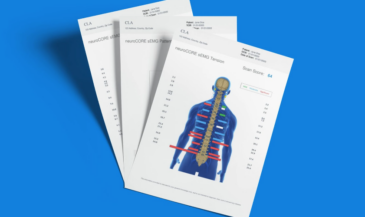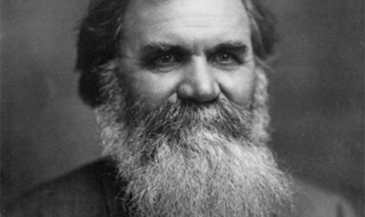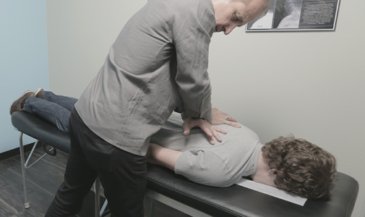By Christopher Kent, D.C.
A recent NGO (Non-Governmental Organization) briefing at the United Nations featured a mother who feared her children might be killed if she sent them to school. Her country was engaged in a civil war, where anyone unfortunate enough to be in the line of fire could become a casualty.
Another speaker was a Native American, who spoke of the devastating effects acquiescing their sovereignty has had on Native American culture. We were told how the children of her tribe were taught to consider the impact of their actions on the next seven generations.
These stories resonated in my heart. For, in chiropractic, we are engaged in a civil war. The innocents caught in the crossfire are the countless individuals who would benefit from chiropractic care. And although there is no exchange of gunfire, the ultimate cost is human life.
The heart and soul of a culture are embodied in its core values and lexicon. The purpose of language is communication, and the tools used to communicate express the culture’s uniqueness. Effective communication requires non-contradictory identification of the evidence of the senses. Precision in communication requires that words be selected which concisely and precisely express the subtle (and not so subtle) characteristics of the object, idea, or value being expressed.
In chiropractic, we have a unique set of core values, specific strategies for putting them into operation, and concise terms to describe them. Terms such as innate intelligence, vertebral subluxation, chiropractic analysis, and spinal adjustment have very specific meanings. They are not synonymous with terms used by other cultures, such as allopathic medicine, to define concepts which are less specific, imprecise, or contradictory.
To destroy a culture, one must attack its core values and lexicon. As the white man sought to “conquer” the Native American, this strategy took form. And in chiropractic, the same strategy is being implemented.
A core value in chiropractic is its vitalistic perspective on life, and an acknowledgment of the body’s innate intelligence. Vertebral subluxation is recognized as a major cause of interference with the expression of that innate intelligence through matter. Chiropractic analysis is the process of identifying and characterizing vertebral subluxations, so that spinal adjustments may be made.
Terms such as “manipulation,” “diagnosis,” “treatment,” “joint lesion,” etc., are not synonymous with the words and concepts just described. Using them in an attempt to absorb chiropractic into an allopathic framework involves a great cost: the culture of a profession.
Our profession faces great challenges from those who seek to destroy our unique culture. In recent years, the World Federation of Chiropractic (WFC) has attempted to re-define chiropractic as “A health profession concerned with the diagnosis, treatment and prevention of mechanical disorders of the musculoskeletal system…” and a scope of practice which “includes the management of patients with acute and chronic headache, neck pain and back pain and other neuromusculoskeletal disorders.”
On its WHO link, the WFC boasts of its involvement in the development of the Mercy guidelines.
It has also drafted policies which may severely limit academic freedom, such as the “Tokyo Charter” and “non-interference” policies. Although it has a policy excluding the use of prescription drugs in chiropractic, it is silent on the issue of proprietary drugs.
The secretary-general of the WFC is leading the charge. He has written that chiropractors must acknowledge that they, “do not do anything unique” and that chiropractic is a “subset of medicine.”
Finally, without polling its membership, the secretary-general filed a complaint on WFC letterhead with the Department of Public Information of the United Nations, asking for termination of WCA’s accreditation as an NGO. This outrageous act particularly offended me as WCA’s representative to the Department of Public Information, affiliated with the United Nations.
I am very proud of our activity as an NGO, particularly the first presentation on “The role of chiropractic care in global wellness,” given by Drs. Ralph Boone and Graham Dobson at the last International NGO Conference of the millennium. I was also pleased to be given the opportunity to join the NGO Health Committee — another first for chiropractic.
Fortunately, there has always been a strong association of dedicated chiropractors to defend our principles and culture — positioning chiropractic as a separate and distinct discipline, not a subset of medicine. For decades, that organization has been the ICA.
At its meeting in 1999, the ICA Board of Directors, in light of recent WFC activities and policies, courageously voted to terminate funding of WFC by ICA. I was horrified when the Board reversed itself later that year, and early this year.
As I explained to the Board, there are essentially three categories of issues which the Board must decide:
1. Moral issues, which go to the core values of the association.
2. Strategic issues, involving means for putting core values into operation.
3. Administrative issues, dealing with internal affairs.
To me, continued support of the WFC is a moral issue, going directly to the heart and soul of our vision of chiropractic. As Ayn Rand wrote, “It is a moral crime to give money to support ideas with which you disagree . . . it is a moral crime to support your own destroyers.”
Because of the ICA Board’s decision to continue support of WFC, I felt the only honorable course was to resign my position on the Board of Directors as well as my membership. After nearly 30 years of involvement with ICA, the decision was painful, but not difficult.
I am not asking anyone to resign from ICA. I am not attempting to impose my personal moral values on anyone. Each of you must decide how you can best serve chiropractic. If you agree with ICA’s direction, remain a member.
What I will ask is that all of you, regardless of any other affiliation, join WCA to protect chiropractic throughout the world. Read about the new structure and intensified program of WCA to bring lifetime, subluxation-centered wellness care to the people of the world.
And then, listen to heart. Join us in WCA. And reflect on the impact your decision will have on the next seven generations.
References
Chapman-Smith D: “Chiropractic in the 21st century,” World Federation of Chiropractic.
Chapman-Smith D: “The Chiropractic Profession,” NCMIC Group, Inc. 2000.
To examine WFC policy statements, visit http://www.wfc.org
To examine the WFC link from WHO, visit http://www.who.int/ina- ngo/ngo/ngo188.htm
Rand A: “Philosophy: Who Needs It?,” Meridian. 1982.











































































































